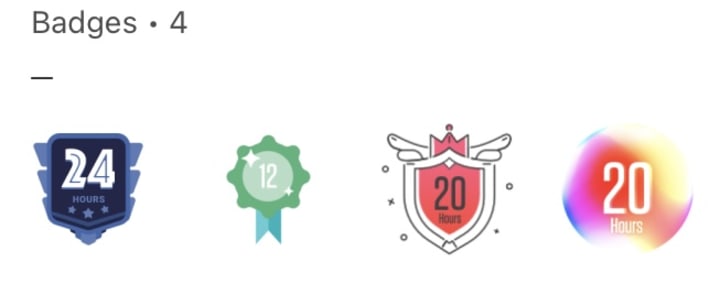
Italki is an online community for students dedicated to the pursuit of learning foreign languages, as well as a thriving virtual marketplace where language teachers and tutors can find clients and get paid to conduct lessons. Teachers are given complete freedom to work whatever hours they want, set whatever prices they want, and plan their lessons in whatever way they want. Some people teach test prep and others teach children. There are tutors who focus solely on offering unstructured conversation practice, while others lead their students through meticulously prepared grammar exercises. Classes are video-based and conducted one-on-one with students over Zoom, Skype, WeChat, or Italki’s built in classroom. If you like languages and talking with people from around the world, and if you want an at home job that offers huge amounts of freedom, Italki might be for you.
My Italki Journey
I joined Italki as a student in 2016. I’d been trying to teach myself German, and I wanted to see if I could have a conversation auf deutsch. I found several great tutors and fell in love with the process of learning languages on Italki. I was teaching English in person at a school in China at the time, and decided to give teaching on Italki a try, as it seemed like a good way to diversify my experience. I became a professional teacher on Italki in 2017. Since then, I’ve taught over four thousand hours worth of English lessons to 518 students from thirty-eight different countries. When I left China in 2019, I was able to transition to doing Italki as my full-time job.

How to Land a Gig on Italki
1. Consider taking some lessons on Italki as a student first to get a feel for the site and how online language learning works. Trial lessons can cost as little as one dollar.
2. Read carefully through Italki’s teacher application page. It will give you information on the website’s code of conduct, the requirements needed to be a professional teacher vs those needed to be a community tutor, and a list of which languages are currently open for new recruits. It will tell you which pieces of equipment you need, which documents you need to submit, and so on.
3. Create a strong introduction video and a professional profile that highlights your skills. Your best roadmap in how to do this is the profiles and videos of existing teachers. What characteristics do you see in the videos and profiles of teachers who have taught lots of lessons to lots of students? What characteristics do you notice in the profiles and videos of teachers who have not attracted many students? Pay attention to these things as you create your own video and profile.
Starting Out and Standing Out
If your application to work through Italki is accepted, you’ll be given a short video orientation with members of Italki’s staff. From there, it will be up to you to build a base of students. Students select their own teachers by freely browsing Italki’s database and choosing the person who they feel is best suited to their needs. Nobody on Italki is guaranteed students or bookings, and the competition for students is fierce in some languages. English, for example, currently has more than 6,000 teachers for students to pick from. It’s in your best interests to stand out. Here are some suggestions on how to do that:
1. Speak/write simply and clearly in your introduction video and profile. The students you’re working with will be learners of your language, so you want to make sure to convey information clearly enough to be comprehensible by even low level speakers.
2. Speak/write in more than one language in your video and profile, if you can. Although I only teach English, and my German isn’t very good, I speak English, German, and Mandarin in my introduction video. I’ve also written all of my profile and lesson introductions in both English and Mandarin. I get a lot of Mandarin and German speakers taking my lessons, and I’ve also had tons of students who do not speak Mandarin or German choose to take lessons with me because they like that I’ve demonstrated my own linguistic abilities. Even if you only speak another language at a B1 level, including it in your profile and video is a good way to attract students.
3. Find a niche. There are a lot of teachers teaching ordinary conversation lessons. If you want to build up a clientele, having a niche will help you do that. Mine is that I have experience working with kids as young as two years old, but lot of people’s niches are way more creative than mine. Italki gives teachers a chance to create, name, and develop their own courses. I’ve seen classes offered for Biblical English, French Through Song, and Medical German. I once stumbled upon a teacher who taught a class called “Learn Japanese Through Playing Minecraft”. I’m not a gamer, so I have no idea how the whole Minecraft thing worked, but it seemed like that teacher had plenty of students and good reviews.

4. Be smart with your pricing. A lot of students are looking for the cheapest teacher possible. When you first start out, it’s worth offering super low prices in order to get reviews and ratings, and build an initial student base. You can set a price of as low as one dollar for a thirty minute trial lesson. Regular lessons can be priced at a minimum of five dollars if you’re a community tutor, and ten dollars if you’re a professional teacher.
My advice, when you’re first starting out, is to offer a range of prices. Charge the lowest price possible for low-prep free talk, but also offer some more premium lesson types at a higher price point. When I first started, I charged ten dollars for one hour of conversation practice, but fifteen dollars for a thirty minute kids’ class. I got plenty of bookings for both lesson types! The low cost lessons meant that I showed up in more searches, and eventually I was able to gain enough dedicated students and positive reviews that I could gradually raise my prices.
5. Participate in the Italki teacher community and promote yourself on social media. Italki has a community where students can post journal entries and ask language related questions. Answering questions or correcting journal entries can help you get noticed. Advertising yourself on the appropriate social media platforms can also help you find students.
6. Interact with other Italki teachers. The website has a forum where teachers can ask questions and offer advice. There are also Facebook groups. Sometimes teachers will help clients they can’t work with find a suitable teacher for them. For example, if somebody who doesn’t offer exam prep has a student who is looking for exam based lessons, they might use the Facebook group to find a teacher to recommend.
7. Teach well. There have been entire books written about this. How to do it is outside the scope of this article. If the language you want to teach is English, there are a lot of comprehensive TEFL courses out there that will give you the basics. However, the crucial thing on Italki is that you give students a learning experience that will keep them coming back for more.
About the Creator
Rose
This is just a hobby.






Comments
There are no comments for this story
Be the first to respond and start the conversation.